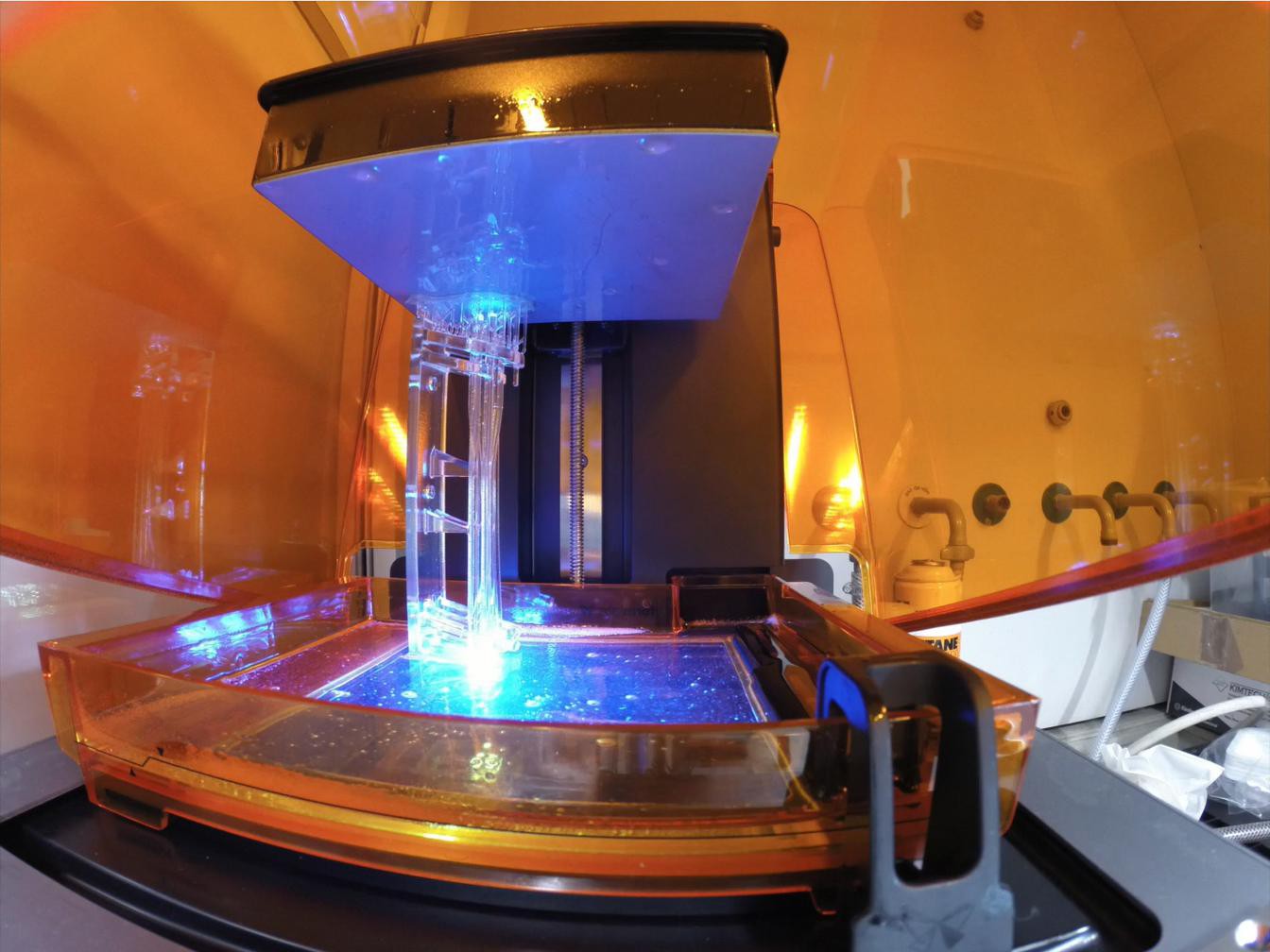Researchers from the Swiss Federal Institute of Technology in Lausanne (EPFL) have utilized electroplating and 3D printing technology to present an innovative fabrication technique for a molecular beam splitter. The research team, consisting of Sean D.S. Gordon and Andreas Osterwalder, have demonstrated advantages for this novel method in a research article.
The paper titled, ‘3D-Printed Beam Splitter for Polar Neutral Molecules’ is published in Physics Review Applied.

Electrically independent electrodes
To create the molecular beam splitter, the duo used a stereolithography 3D printer combined with a metal coating technique known as electroplating. While electroplating is not a new method and is often used in other industries, according to Andreas Osterwalder the “plating of printed pieces has not been done before in the context of scientific applications.”
Once 3D printed, the structures were sent to Swiss company Galvotec, located near Zurich, to galvanize them ready for electroplating. This process meant the researchers could make some areas of the electrode rods conductive while other parts insulating. This was crucial for the fabrication of the beam splitter as the device needed to have two electrically independent electrodes to enable the splitting of molecular beams.

Advantages of the method
The two researchers explain that their method speeds up production time dramatically and also opens up the possibilities for advanced complex structures. According to the pair, production time was sped up by a factor of 50-100 since conventional techniques can take several months. Furthermore, all the parts for this study were 3D printed within two days with electroplating occurring in a single day. Additionally, this fabrication method produces the required surface finishes which, as Andreas Osterwalder says, “comes for free when using the 3D-printing approach.”
The device they have created is beneficial to measurement techniques such as spectroscopy, the study of light. However, typically beam splitters are restricted to solely analyzing light beams. Now, with this new device the researchers can split molecular beams inside a vacuum that is able to control the motion of the beams.
Elsewhere in Switzerland, Liebherr has supplied a metal 3D printed control component for Airbus. The hydraulic valve component proved successful in testing during a trial flight.
If you haven’t yet, make sure to cast your votes in the 1st Annual 3D Printing Industry Awards which take place later this month.
For the latest insight into 3D printing research, sign up to our newsletter and follow us on twitter and Facebook.
Featured image shows a close-up of the completed electrodes of the beam splitter. Photo via A. Osterwalder/EPFL.


